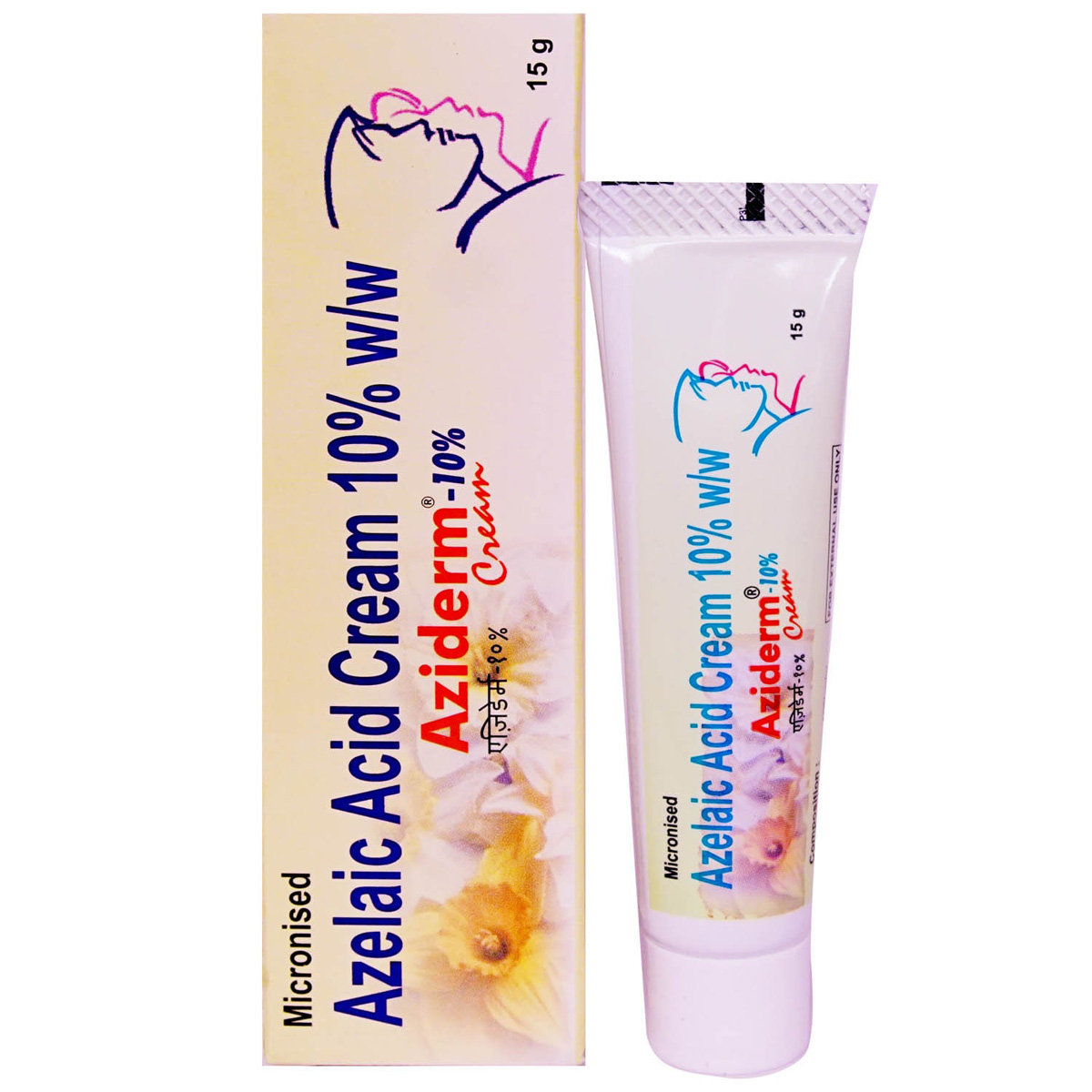Azelaic Acid
About Azelaic Acid
Azelaic Acid belongs to the class of 'anti-acne medication', primarily used to treat acne (pimples) and rosacea (redness and visible blood vessels on the face). Azelaic Acid has antibacterial, keratolytic (removes warts, calluses and other lesions), comedolytic (inhibits the formation of blemishes), and anti-oxidant activity. It is used to clear bumps, lesions, and swelling caused by rosacea. Acne is a skin condition caused when the hair follicles are plugged with oil and dead skin cells. It can cause whiteheads, blackheads and pimples. Rosacea is a skin disease that causes redness, flushing, and pimples on the face.
Azelaic Acid contains 'Azelaic acid,' which is a bactericidal (kills bacteria) agent. It works by inhibiting the synthesis of microbial cellular proteins. Azelaic Acid clears the pores of bacteria that cause irritation and breakouts. It reduces inflammation making acne less visible, less red, and less irritated. Azelaic Acid also helps the skin renew itself and reduces pimple and blackhead formation.
Azelaic Acid is for external use only. Avoid contact with eyes, eyelids, lips, mouth and nose. If the medicine comes in contact with any of these areas, rinse with water immediately. Common side effects of Azelaic Acid include dryness, peeling, burning, irritation, itching, and redness at the application site. These side effects may not occur in every patient using this medication and differ individually. If the side effects persist longer or worsen, please seek a doctor’s advice.
Please tell your doctor if you are allergic to Azelaic Acid or its components that may cause skin irritation. Azelaic Acid can make the skin change colour, especially when the skin is dark in colour. Please limit the use of products that contain large amounts of alcohol (astringents, shaving creams or after-shave lotions), hair removal products, and products containing lime or spices while using Azelaic Acid. Keep Azelaic Acid away from flames and extreme heat. It is essential to let your doctor know if you are pregnant, planning to conceive or a breastfeeding mother.
Uses of Azelaic Acid
Medicinal Benefits
Azelaic Acid treats acne (pimples) and rosacea (redness and visible blood vessels on the face). It contains 'Azelaic acid', a dicarboxylic acid with antibacterial, keratolytic (removes warts, calluses and other lesions), comedolytic (inhibiting the formation of blemishes), and anti-oxidant activity. Azelaic Acid is bactericidal and inhibits the synthesis of microbial cellular proteins. It clears the pores of bacteria that cause irritation and breakouts. It also reduces inflammation making acne less visible, less red, and less irritated. Azelaic Acid also helps the skin renew itself and reduces pimple and blackhead formation.
Directions for Use
Storage
Side Effects of Azelaic Acid
- Dryness
- Peeling
- Burning
- Irritation
- Itching
- Redness at the application site
Drug Warnings
Do not use Azelaic Acid if you are allergic to Azelaic Acid or any of its components. Please inform your doctor if you are using any prescription and non-prescription medications you are taking, including vitamins, before starting Azelaic Acid. Azelaic Acid can make the skin change colour especially when the skin is dark in colour. It is recommended to avoid tanning booths and sunlamps. Do not apply Azelaic Acid on the irritated and sunburned skin. Please limit the use of products that contain large amounts of alcohol (astringents, shaving creams or after-shave lotions), hair removal products, and products containing lime or spices while using Azelaic Acid. Pregnant and breastfeeding women should consult their doctor before using Azelaic Acid.
Drug Interactions
Drug-Drug Interaction: Azelaic Acid may interact with other drugs treating acne (isotretinoin), drugs treating fluid retention (spironolactone), injectable antibiotics, immunosuppressive drugs, and drugs used to relieve itching.
Drug-Food Interaction: There are no established interactions.
Drug-Disease Interaction: Before starting Azelaic Acid, let your doctor know about your previous medical history, including skin infections,
Drug-Drug Interactions Checker List:
Safety Advice

Alcohol
safe if prescribedNo interaction was found/established.

Pregnancy
cautionPlease consult your doctor before using Azelaic Acid if you are pregnant or planning to conceive.

Breast Feeding
cautionThere are limited studies on how Azelaic Acid affects the breastfed infants. Please consult your doctor before using Azelaic Acid if you are breastfeeding. If you need to apply the cream or lotion on your breasts, don't do this shortly before giving a feed.

Driving
safe if prescribedAzelaic Acid usually does not interfere with your driving ability and is safe to use.

Liver
cautionLet your doctor know if you have any history of liver diseases before using Azelaic Acid.

Kidney
cautionLet your doctor know if you have any history of kidney diseases before using Azelaic Acid.

Children
cautionAzelaic Acid is not recommended for use in children as the safety and efficacy is not established.
Habit Forming
Diet & Lifestyle Advise
- Avoid harsh products on your skin.
- Do not share cosmetic products, face towels, and bathing bars.
- Manage stress, eat healthily, drink plenty of water, exercise regularly, and get plenty of sleep.
- Avoid or limit the intake of alcohol and caffeine.
- Rinse your face with water several times a day to avoid breakouts.
- Do not scratch or pick your skin to avoid infecting the affected area.
- Hydration is important in managing acne; hence drink 3-4 litres of water daily to eliminate toxins from the body.
- Include anti-inflammatory foods in your diet.
Special Advise
Consult your dermatologist if you do not notice any improvement after 4-6 weeks of treatment with Azelaic Acid.
Patients Concern
Disease/Condition Glossary
Acne vulgaris is a skin condition caused when the hair follicles are plugged with oil and dead skin cells. Whiteheads, blackheads, pimples, cysts, and nodules are all types of acne. It commonly occurs in teenagers though all age groups are affected. Symptoms include blackheads, pus-filled pimples, and large/red bumps. Break-outs can happen on the face, neck, back, shoulders, and chest. The risk factors for acne are hormonal changes, polycystic ovarian syndrome (PCOS), poor sleep, stress, smoking, dermatological and cosmetic products with high oil content, and genetic conditions. Treatment involves antibiotics, retinoids, and topical products with diet and lifestyle changes.
FAQs
Azelaic Acid contains 'Azelaic acid, an antibacterial medication used to treat acne (pimples) and rosacea. It kills bacteria, reduces inflammation and unplugs blocked pores. Azelaic Acid acts as a bactericidal agent and kills the bacteria that causes acne. It also has keratolytic (removes warts, calluses and other lesions), comedolytic (inhibits the formation of blemishes), and anti-oxidant activity.
Your doctor may advise the initial dose as once daily in the evening. The dose may be increased to twice or thrice daily in the morning and evening.
Azelaic Acid usually improves your skin condition in four weeks of treatment. If you notice no improvement after a month of treatment, please reach out to your doctor. For best results, the doctor may advise you to use Azelaic Acid regularly for several months.
It is advised to limit the use of products that contain large amounts of alcohol (astringents, shaving creams or after-shave lotions), hair removal products, and products containing lime or spices if you are using Azelaic Acid.
Azelaic Acid works by killing the bacteria responsible for acne. It also clears the pores of the skin and helps in reducing blackheads and whiteheads.
It is not recommended to use Azelaic Acid for the treatment of melasma. Azelaic Acid is only useful in treating acne, rosacea and its associated conditions.





